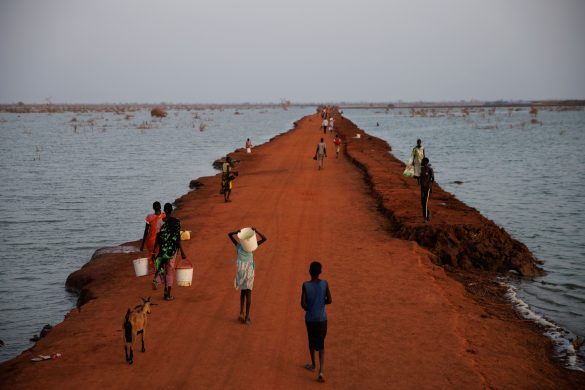The economies of emerging East Asia will grow at a steady pace for a third year in a row in 2006, benefiting from strong US growth and continued expansion in China, the World Bank said in a report released Thursday in Sydney.
The region, which includes the industrial giant China and emerging economies such as Vietnam – but not Japan or India – should grow 6,6 percent overall in 2006, compared with last years 6,8 percent growth, the Washington-based multinational lender said in its twice-yearly “East Asia Update”.
The World Bank said the regions prospects for 2006 “look reasonably firm, with aggregate regional growth expected to exceed 6.5 percent for a third year in a row”.
Homi Kharas, the Banks Chief Economist for East Asia and the Pacific, said “East Asias exports surged to over 2 trillion US dollar last year, and this powered the regions growth. Strong growth in turn is having a dramatic impact on poverty reduction”.
He said that 580 million people in the region still live on less than two dollar (12,40 DKR) a day and that this number has been falling by about 50 million people each year over the past five years.
On a more cautionary note, the report noted that investment in the region, which had rebounded in 2004, slowed in 2005, and capital flows in many economies reversed course last year, including short-term flows, which fell due to the narrowing of the interest-rate gap between Asia and the US.
The report said East Asia has now surpassed Europe as the most open region in the world with exports almost doubling over the past three years, but this level of openness also exposes economies to some new challenges.
The report further noted that last years “impressive performance was in spite of rising oil prices – the highest in 25 years – rising interest rates, continued worries over the financing of the United States current account deficit and over the prospect of the spread of avian flu”. Some of the risks to growth had moderated, it said, while warning of the dangers of large and rising macroeconomic imbalances.
The Bank said in its report that East Asia should be doing more to reduce its greenhouse gas emissions. According to the Bank, the East Asia and Pacific region was vulnerable to natural disasters, the intensity of which could be increased by climate change.
Further, the World Bank predicts the Southeast Asia region of Indonesia, Malaysia, the Philippines and Thailand will grow 5,3 percent in 2006 – faster than last years 5,1 percent. Indonesia is expected to expand 5,5 percent this year after 5,6 percent in 2005, Malaysia at 5,5 percent, up from 5,3 percent, the Philippines 5,3 percent from 5,1 percent and Thailand 5 percent from 4,5 percent.
The Bank projects China will slow to 9,2 percent in 2006 from 9,9 percent last year while Vietnam will moderate to 8 percent against 8,4 percent.
The Bank further said China faces important challenges this year despite a “benign” economic outlook as it tries to boost domestic consumption and deal with international trade tensions. The report noted that China was striving to get private consumer spending to take up a larger share of overall growth but argued it would be a while before these policies would yield significant results.
Kilde: www.worldbank.org















